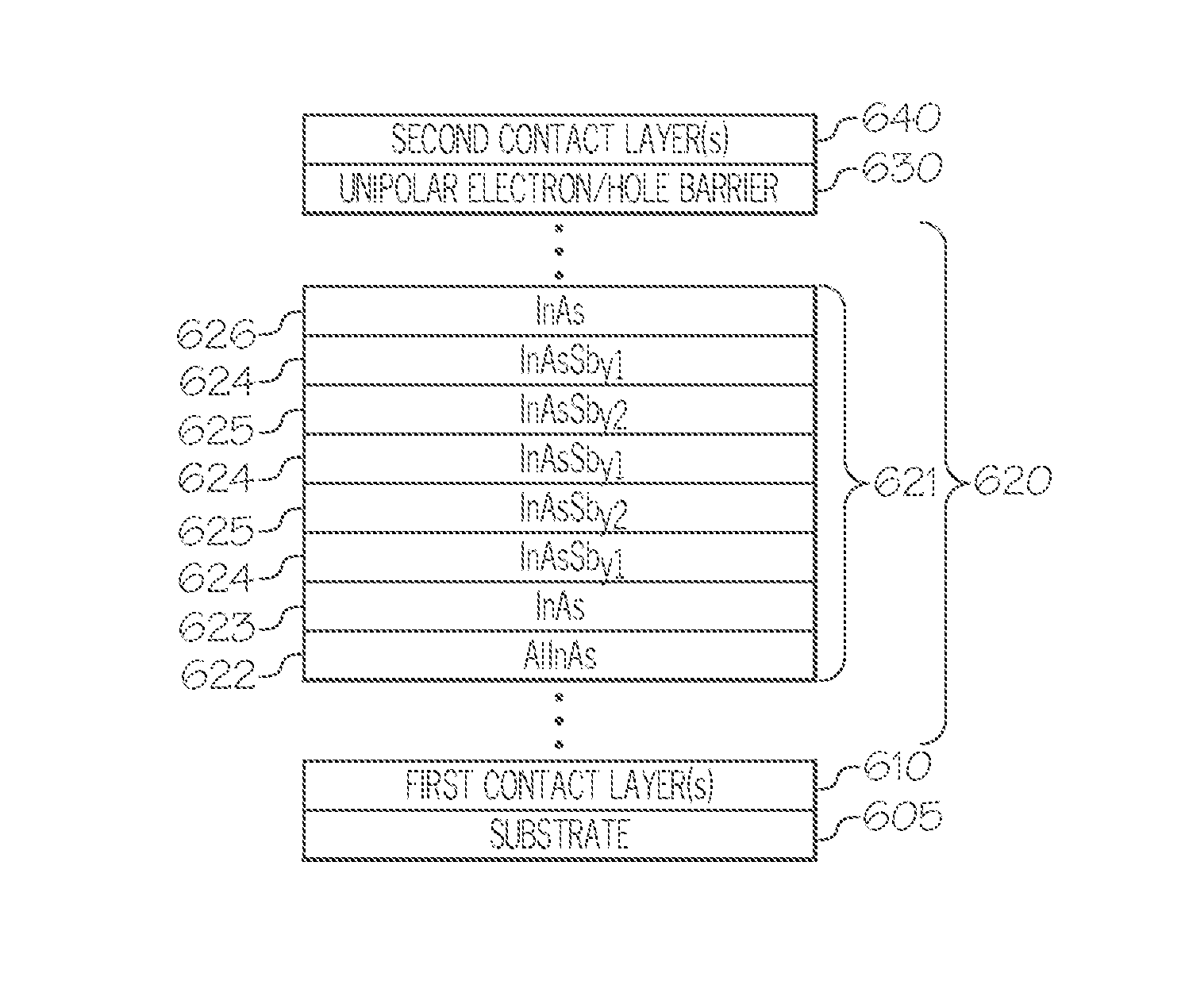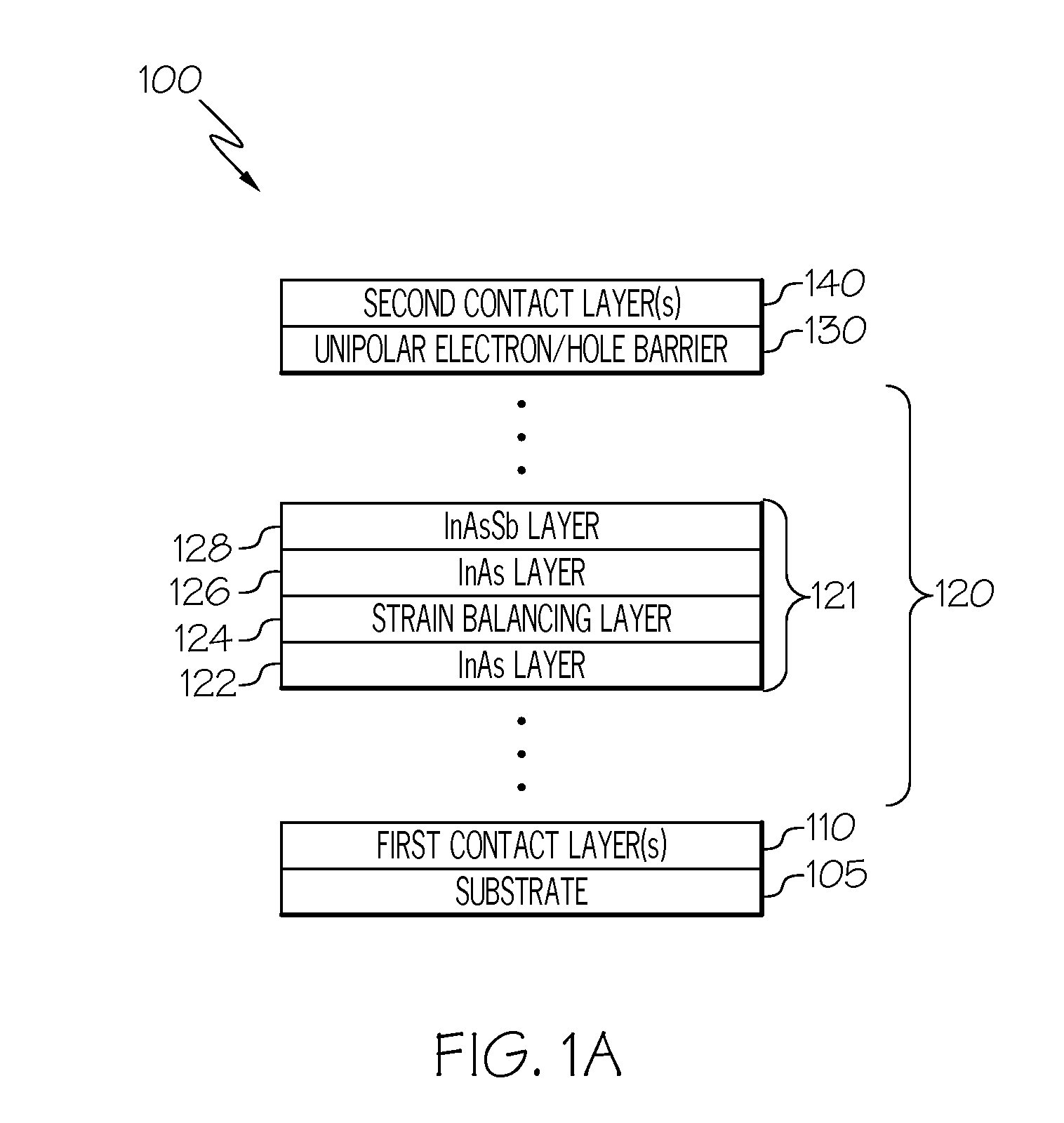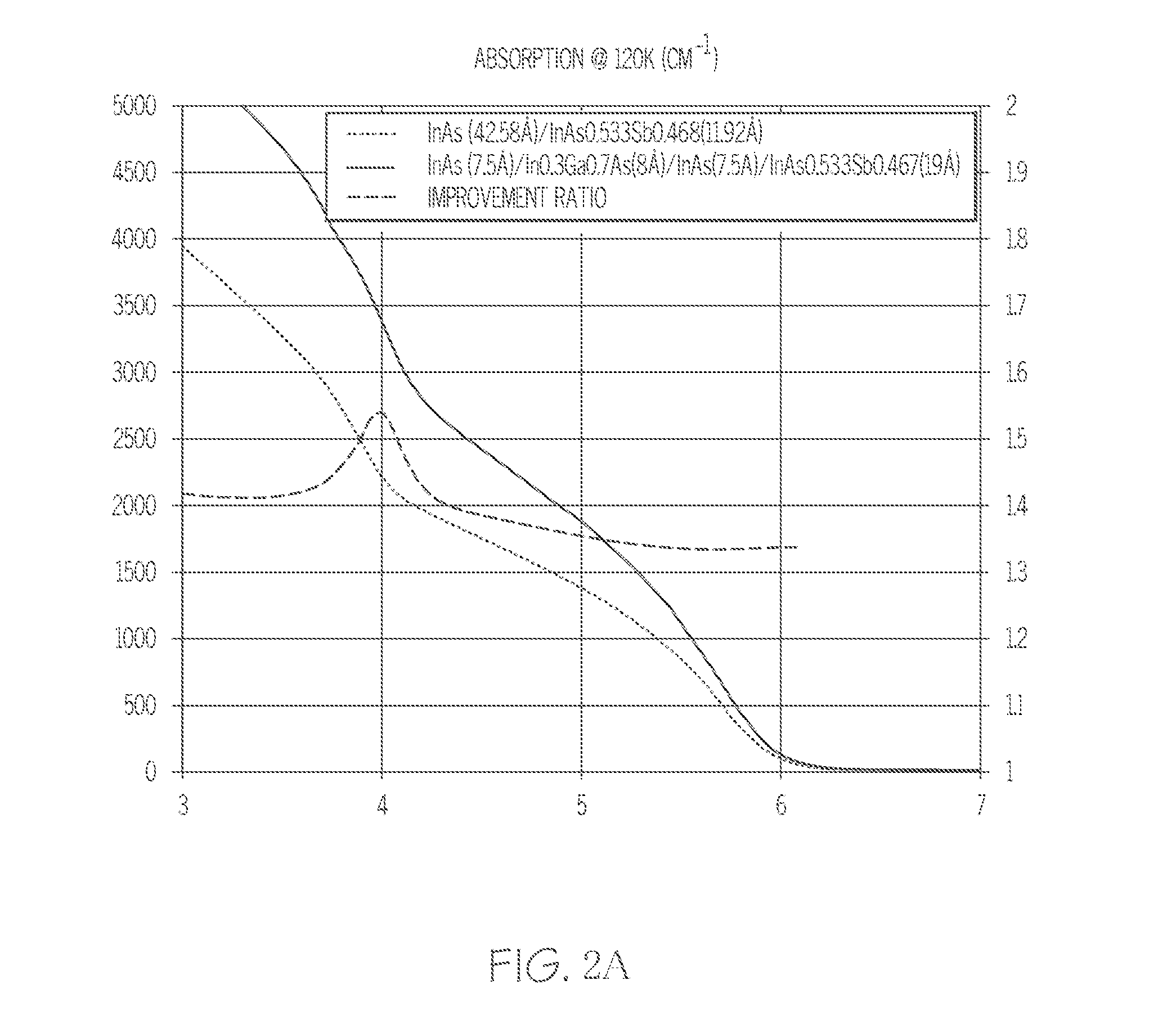Superlattice Structures and Infrared Detector Devices Incorporating the Same
a super-lattice structure and detector device technology, applied in the field of infrared detector devices, can solve the problems of inas/inassb sls being less practical for longer cutoff wavelengths
- Summary
- Abstract
- Description
- Claims
- Application Information
AI Technical Summary
Benefits of technology
Problems solved by technology
Method used
Image
Examples
Embodiment Construction
[0024]Embodiments of the present disclosure are generally directed to infrared detector devices (e.g., barrier infrared detector devices (“BIRD”)) regardless of wavelength regime, e.g., short wavelength infrared (“SWIR”), mid wavelength infrared (“MWIR”), long wavelength infrared (“LWIR”), very long wavelength infrared (“VLWIR”), etc. to increase quantum efficiency (“QE”) and reduce the hole effective mass of superlattice structure (“SLS”) infrared detector devices. As an example and not a limitation, the InAs / InGaAs / InAs / InAsSb superlattice structures and other superlattice structures described herein may be provided in the absorber region of the diode barrier infrared detector devices (“DBIRD”) described in U.S. patent application Ser. No. 14 / 271,908 filed on May 7, 2014 entitled “DIODE BARRIER INFRARED DETECTOR DEVICES AND SUPERLATTICE BARRIER STRUCTURES,” which is hereby incorporated by reference in its entirety.
[0025]In embodiments of the present disclosure, a strain-balancing ...
PUM
 Login to View More
Login to View More Abstract
Description
Claims
Application Information
 Login to View More
Login to View More - R&D
- Intellectual Property
- Life Sciences
- Materials
- Tech Scout
- Unparalleled Data Quality
- Higher Quality Content
- 60% Fewer Hallucinations
Browse by: Latest US Patents, China's latest patents, Technical Efficacy Thesaurus, Application Domain, Technology Topic, Popular Technical Reports.
© 2025 PatSnap. All rights reserved.Legal|Privacy policy|Modern Slavery Act Transparency Statement|Sitemap|About US| Contact US: help@patsnap.com



